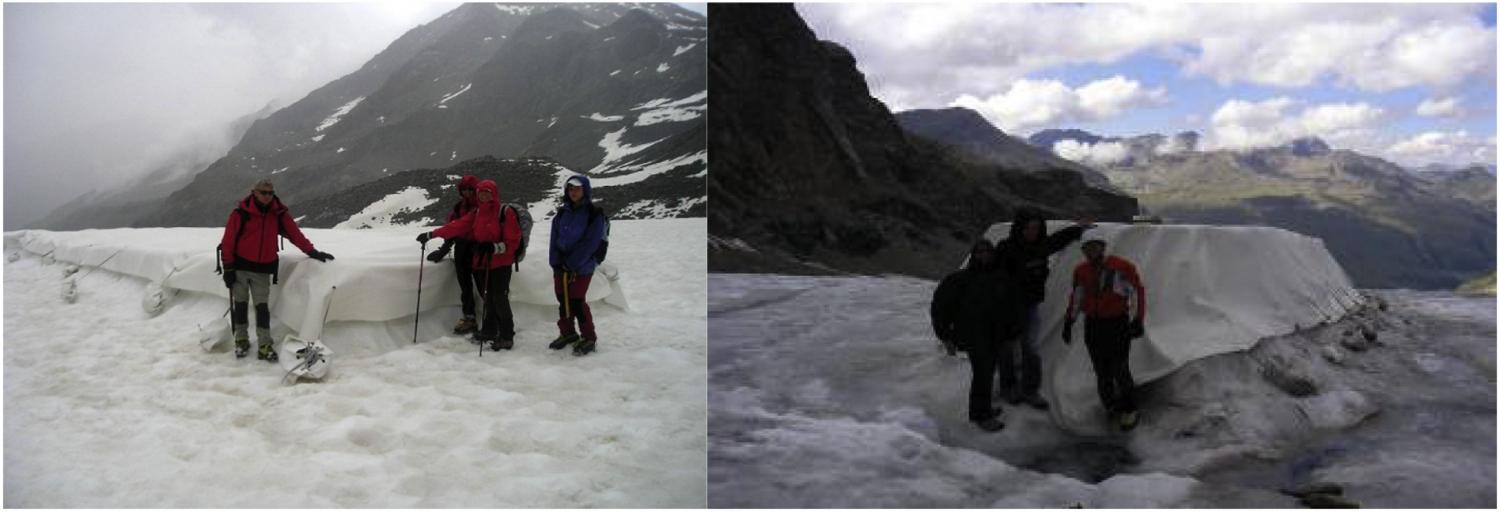
During the past decades, there have been attempts to offset melt at glacier ski resorts. The most important method is active glacier protection, largely based on the use of geotextiles to preserve snow cover and reduce its melt. Until 2008, a scientific evaluation of the efficiency of glacier covering strategies had never been carried out in Italy, although strategies for snow melt reduction were already in place. In this study, we show the results from three experiments carried out on Dosdè Est Glacier (Cima Piazzi Group, Lombardy) and Presena Ovest Glacier (Adamello-Presanella Group, Autonomous Province of Trento). The first experiment was set up in 2008 at 2800 m a.s.l. on Dosdè Est Glacier with the aim of verifying the applicability and the effectiveness of these geotextile covers on non-groomed snow. The second test was carried out in 2010 by covering most of Presena Ovest Glacier with the aim of verifying the applicability and the effectiveness of geotextile covers on groomed snow and of investigating the involved radiative processes. The last experiment was set up in 2012 at 2765 m a.s.l. on Presena Ovest Glacier and it was aimed at evaluating which materials and properties are able to reduce snow/ice melt more effectively. Tested materials included commonly used polypropylene and polyester and poly-lactic acid (fully biodegradable) with different combinations of mass per unit area and thickness. We found that these non-woven geotextiles are able to reduce snow/ice melt up to 69% compared to the uncovered glacier surface, mainly thanks to an increase in albedo by about 50% compared to ice. The material with the best performances is composed of polypropylene with a mass of 500 g/m2 per unit area and a nominal thickness of 3.70 mm.
